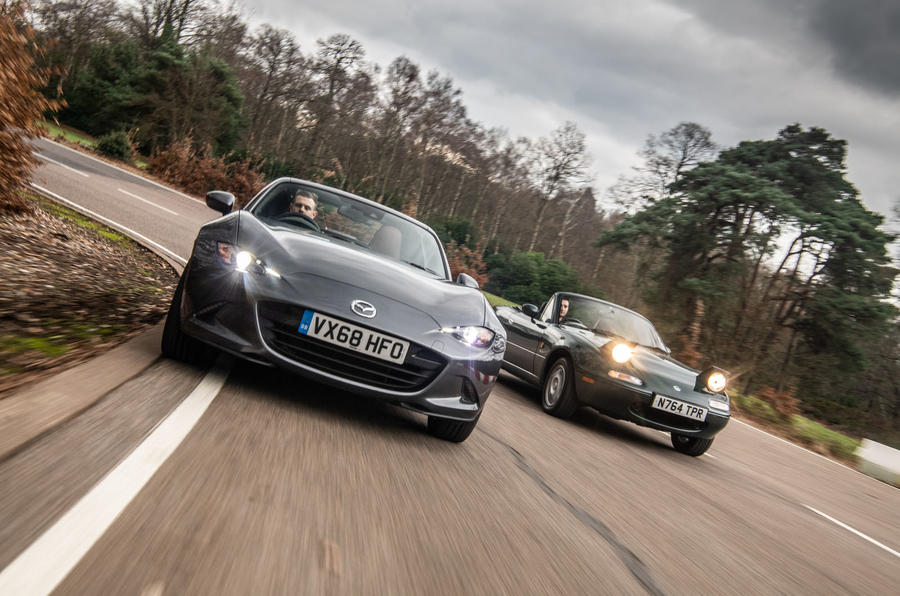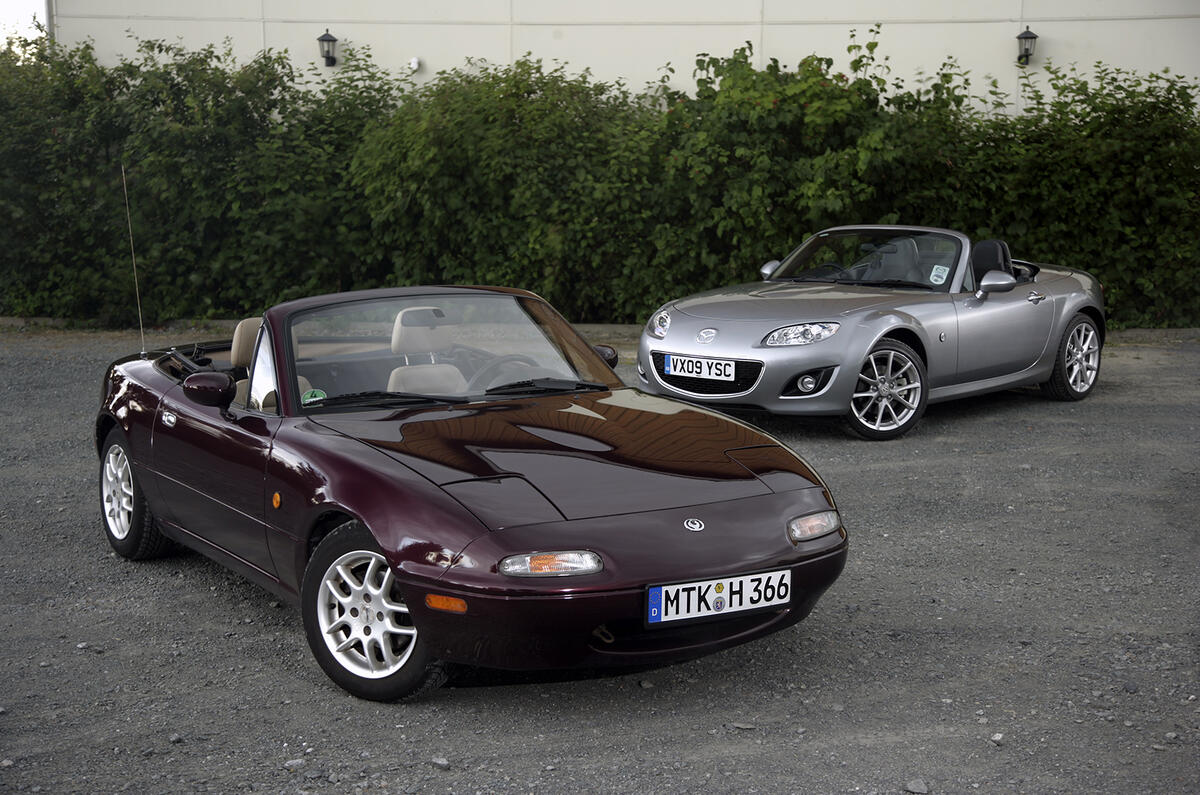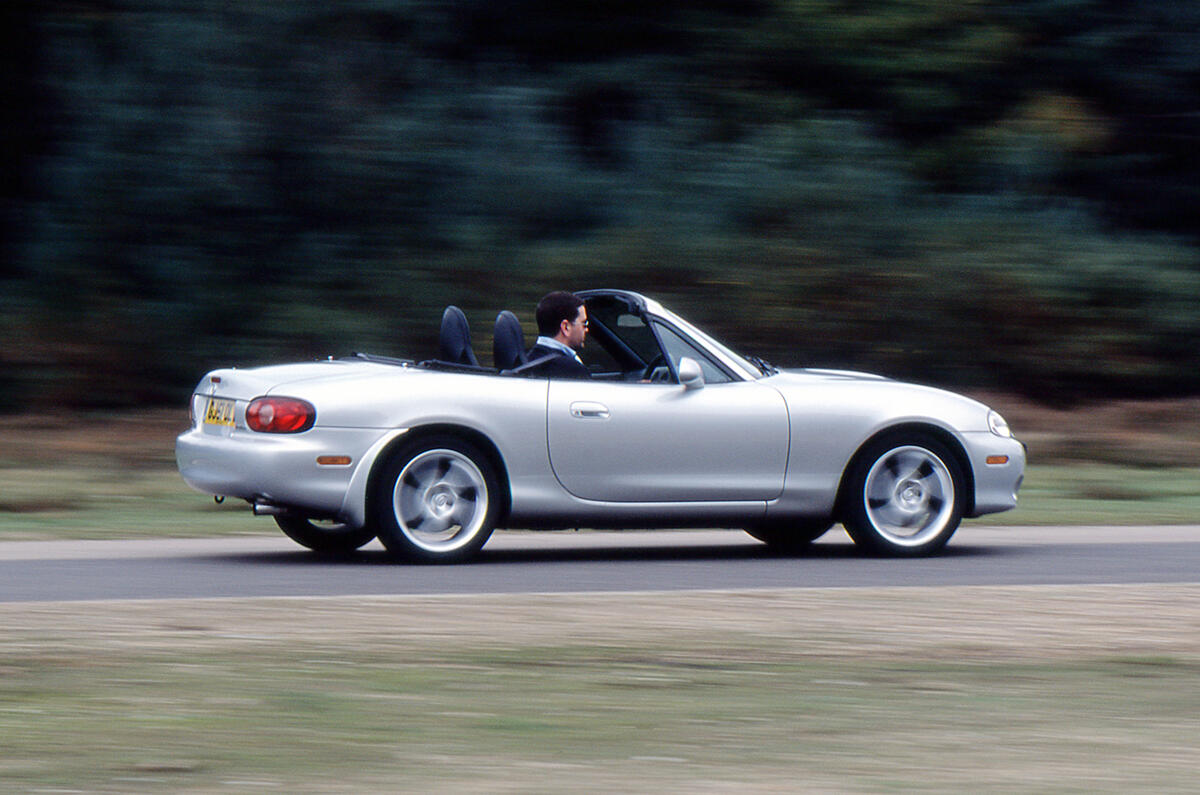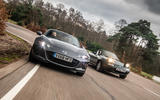In February 1989 at the Chicago Auto Show, Mazda pulled the wraps off a lightweight, affordable sports car that would go on to be the biggest-selling two-seater convertible in history. The Mazda MX-5.
Standing for Mazda Experiment and project number 5, the MX-5 went through seven years of heavily critiqued design, engineering and testing before being given the production green light.
It eventually went on sale in the UK on 14 March 1990, priced at £14,249. That day was also when we published our full road test of the affable sports car. Powered by a 1.6-litre inline four cylinder engine putting out 114bhp at 6500rpm, enabling a 0-60mph dash in 9.1sec and topping out at 114mph, the MX-5 was never about searing pace, as Autocar wrote back in the day.
“If you’re expecting a Mazda MX-5 to set you alight, you’re in for a disappointment. But as with everything the MX-5 does, it’s not the result but the participation that puts a smile on your face.
“This is the two-seat roadster that car enthusiasts have been screaming for since the demise of the old Lotus Elan. It also has the two ingredients essential in any sports car powerplant: instant throttle response and an invigorating exhaust note.”
The real ace up the the third-generation MX-5's sleeve proved to be its five-speed manual gearbox. “Rising no more than a couple of inches from the transmission tunnel, the well-weighted gear lever snaps through its tiny throws with millimetric precision,” we mused. Allied to pin-sharp handling and spectacular balance to flaunt its 950kg kerb weight, it allowed the driver plenty of mid-corner adjustability.
“The MX-5 is a total success. Mazda’s single-minded determination to provide fun has produced a car of the rarest quality. Above all else, it is its ability to involve the driver intimately in its every reaction and response that makes it a joy to drive. Few others, at any price, can offer so much.”
















































































Join the debate
Add your comment
Mine was terrible
I believed the hype surrounding Mazdas and it was my downfall.
My brand new top of the range MX5 Cabriolet Coupe had a list of defects that were not fixed but the dealership ruined the paintwork whilst it was with them. It then broke down multiple times, with Mazda refusing a courtesy car on one occasion.
I got rid of it before it was a year old it was that bad, as well as the awful 'support' from Mazda UK.
I'll never buy another Mazda again.
They are great cars, just
I love the G3 version, the
I love the G3 version, the current model's styling is too fussy for me.
The retractable hardtop of the G3 is pretty good too, again better for me than the current model.